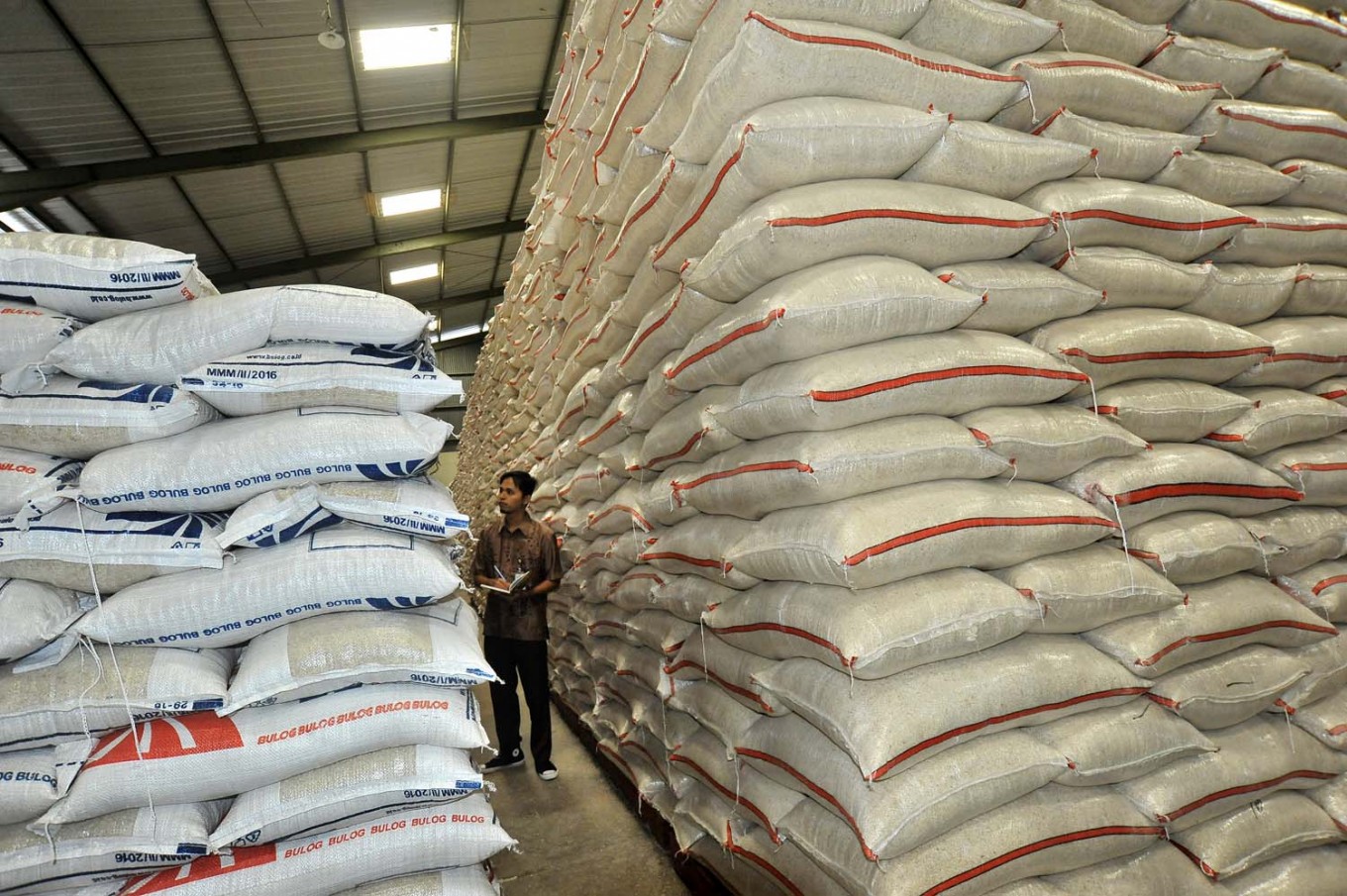Popular Reads
Top Results
Can't find what you're looking for?
View all search resultsPopular Reads
Top Results
Can't find what you're looking for?
View all search resultsTech key to maintaining staple food prices
Change text size
Gift Premium Articles
to Anyone
F
ood prices, which are vulnerable to inflation and import policies, are becoming a hot issue as the nation gears up for the presidential and legislative elections.
The opposition camp has used food price hikes to attack government policies.
Food price hikes sometimes, however, have nothing to do with government policy. According to the Office of the Coordinating Economic Minister, seasonal food price hikes remain a problem even though there is sufficient stock of staple food.
The office's food and agricultural coordination deputy Musdhalifah Machmud said it was because prices tend to increase during the dry season from October to January when food stock is usually low.
Statistics Indonesia data shows farm gate rice prices tend to increase in September and reach their peak in January.
Musdhalifah said to prevent seasonal price rises from happening, state-owned logistics company Bulog needs to use technology to maintain sufficient and good quality staple food stock that is collected during harvest and stored until the dry season.
“We need to prepare the technology relating to rice storage,” she said at a roundtable discussion held by the Indonesian Chamber of Commerce and Industry in Jakarta.
Musdhalifah highlighted that Bulog lacked the technology to maintain the quality of rice as well as warehouses to store its stock.
Bulog is commonly known for its low-quality rice, as it tends to become yellow over time when it is stored in a warehouse without being reprocessed.
Similar problems might arise with other commodities like onions that undergo special treatment while stored, Musdhalifah said, adding that such treatments could be costly. Controlled atmosphere storage is an example of a technology that can preserve onions, although its use is still uncommon in Indonesia.
Musdhalifah added that the private sector needed to play a larger role in adopting new technology, such as silos and dryers, to maintain the quality of commodities in storage.
Aside from in-storage technology, better information systems are needed to collect data on the harvest and distribution of corn. She acknowledged that the current system run by the Agriculture Ministry had failed to provide the correct information on the harvest of corn, which led the price of corn to rise.
The low stock of corn, which badly affected farmers that rely on corn to feed their livestock, resulted in the government importing at least 130,000 tons of corn since November last year.
Food and agricultural expert Bayu Krisnamurti shared the sentiment that seasonal staple food price rises were a constant issue in the country.
However, he said the government should not neglect the welfare of farmers in its efforts to maintain staple food prices, whom he said had received a lower daily income of Rp 52,828 (US$3.77) compared to the Rp 86,717 earned by freelance construction workers.
The former undersecretary at the trade ministry argued that boosting farmers’ productivity could maintain the prices of staple food as they would not solely rely on their harvest to earn money, resulting in stable farm gate prices.
“Farmers’ productivity should be improved and technology is the instrument that can be easily used to achieve that. When talking about farmers’ welfare, we should not only discuss prices but also productivity as well as the quality and value of their products,” he said.
He added farmers could double their harvest and add value to their products by adopting technology, mentioning the System of Rice Intensification as an example, referring to a low water, labor-intensive method that uses younger seedlings singly spaced and typically hand weeded with special tools.
“We should put more attention on the welfare of our farmers because there are clear indications that they are moving to other jobs,” he said. (ars)










